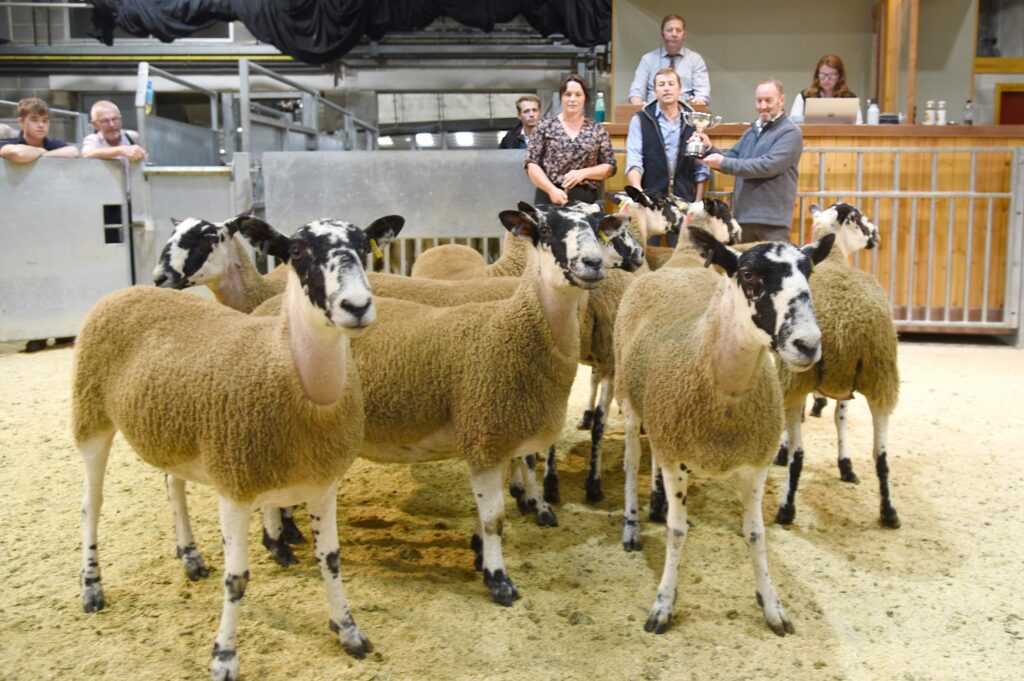Tight breeding sheep supply keeps prices up £40

© Craven Cattle Marts
Tight shearling supplies and a prime lamb price £15-£20 up on the year have led confident commercial sheep buyers to pay £40 more for replacement stock.
Auctioneers say a tightening in sheep across the board is leading to confidence, as prime lambs trade for 50p/kg above this time last year.
Ted Ogden, auctioneer at Skipton for Craven Cattle Marts, said there was a notable shortage of white-faced sheep in his area following strong hogg prices in April and May.
See also: Slump in sales of sheepskins and cow hides hits abattoirs
Rather than keep gimmers to graze and sell in the breeding sales, many vendors sold them sooner for £180 or more as prime lambs. In March deadweight lamb prices were 200-290p/kg up on the year, and in May topped at 893p/kg.
“Some people opted to cash their lambs early so there are fewer about as a result,” said Mr Ogden. “We are simply seeing the mechanics of supply and demand at play.”
Mr Ogden reported a £245-a-head average for Texel crosses at Skipton’s recent shearling sale. This was £72 up on the year.
The overall sale average for all breeds was £213, which was more than £48 up on the year. The total yarding was 3,409 head, down 35% on last year.
Defra figures show lamb throughputs were 2.8% back on the year in July, in line with AHDB estimates of a 2.9% fall in prime lamb production in 2024, which auctioneers say is driving sector confidence.
Census data also show female sheep numbers were 2.4 million back in December 2023 on 2018, at 13.7 million.
Hereford livestock auctioneer Rory Matthews said tightening sheep numbers meant very few North of England Mules and Welsh Mule shearlings were making less than £200.
“Even though breeding sheep are at record prices, they don’t seem that dear when you consider the cull value,” he said. “ Cull ewe trade is strong, so depreciation is only 20% providing they walk off the farm.”
Mr Matthews said Hereford had bucked the trend in that its sales had so far found more sheep than last year. “Generally, there are fewer sheep around, and that’s helping trade.”
